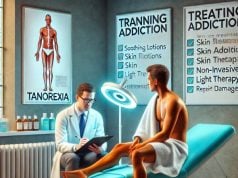
A surge in polysubstance use means more people are mixing hallucinogens—such as LSD, psilocybin, or MDMA—with stimulants like cocaine, amphetamines, or prescription ADHD medication. This powerful cocktail can feel euphoric, but it also dramatically raises the risk of health crises, dependence, and long-term brain changes. Combined Hallucinogen and Stimulant Use Disorder (CHSUD) describes a pattern of compulsive, harmful use of both drug classes at once. Understanding how CHSUD develops, how it shows up in real life, and how to treat it can save lives.
Table of Contents
- Scope and How Common It Is
- Roots and Contributing Factors
- Warning Signs, Presentations, and How Doctors Confirm It
- Toll on Body, Mind, and Daily Life
- Evidence-Based Care and Pathways to Healing
- Frequently Asked Questions
Scope and How Common It Is
Emerging data reveal that polysubstance use is no longer the fringe behavior it once seemed. National surveys suggest about one in four people who use hallucinogens in the past year also report non-medical stimulant use during the same window. Emergency-department records echo the trend, with combined LSD-cocaine presentations tripling in the last decade. Yet epidemiology may underestimate the real picture, because many people micro-dose psychedelics alongside prescription stimulants “to stay productive” without labeling it recreational.
Globally, festivals and nightlife scenes act as hubs where stacking MDMA (“molly”) with cocaine or meth is normalized, a practice called “candy-flipping” when LSD is involved, and “kitty-flipping” when ketamine joins in. Online forums further popularize it by sharing dosage charts that downplay dangers.
Why do users combine? Surveyed motives include:
- Achieving a longer or more intense psychedelic peak.
- Counteracting unwanted side effects (e.g., dullness from ketamine or fatigue after MDMA).
- Chasing novelty when tolerance makes a single drug feel “flat.”
Because hallucinogens can mask early stimulant toxicity, people stay in risky zones longer—an especially urgent public-health concern. Epidemiologists fear the pattern will grow as psychedelic therapy gains mainstream appeal, making stimulant augmentation seem harmless.
Roots and Contributing Factors
Substance use disorders rarely spring from a single cause; CHSUD is no exception. Several intertwined forces set the stage:
Neurobiology of Reinforcement
Hallucinogens primarily target the 5-HT2A serotonin receptor, producing altered perception and emotional openness. Stimulants boost dopamine and norepinephrine, yielding energy and reward. Combining them creates a powerful synergy: heightened sensory intensity paired with amplified motivation. Animal studies show that co-administration of serotonin agonists and dopaminergic agents produces stronger cue-reinforcement than either drug alone, priming the brain for compulsive seeking.
Genetic Vulnerability
Polymorphisms in the DRD2 gene (dopamine receptor D2) can reduce natural reward sensitivity, pushing individuals to seek bigger chemical “hits.” Meanwhile, variants in the 5-HTTLPR serotonin transporter may modulate psychedelic tolerance, influencing dose escalation. When both genes interact, the brain’s reward circuitry becomes an especially fertile ground for CHSUD.
Developmental and Psychological Factors
- Adolescence: The prefrontal cortex, crucial for impulse control, is still maturing. Early experimentation can lock in maladaptive reward pathways.
- Trauma and PTSD: Some users self-medicate flashbacks or hyperarousal with psychedelics for emotional insight and stimulants for perceived control.
- ADHD: Untreated attention issues may lead to misuse of prescription stimulants; once tolerance builds, hallucinogens are added to regain novelty.
Social and Cultural Drivers
- Peer norms in rave and festival culture celebrate “stacking” drugs.
- Social media “trip report” influencers glamorize risky combinations with little mention of hospitalizations.
- Affordability: Synthetic cathinones (“bath salts”) and research chemicals sold online cost less than single traditional substances, making poly-use economically appealing.
Co-Occurring Conditions
Comorbid mood and anxiety disorders, as well as other substance use (alcohol, cannabis, benzodiazepines), heighten vulnerability. Combined patterns may develop as people chase different pharmacologic effects to manage shifting moods.
Understanding these myriad risk factors underscores why CHSUD is not simply “taking two drugs at once” but a disorder rooted in biology, psychology, and environment.
Warning Signs, Presentations, and How Doctors Confirm It
CHSUD often hides in plain sight because each drug can conceal the red flags of the other. Watch for these overlapping signals:
Behavioral Indicators
- Rapid mood cycles—euphoria, agitation, mystical rapture, panic—often within hours.
- Extended binges lasting 24–72 hours with little sleep.
- Unplanned money drains on “party weekends,” followed by secrecy or memory gaps.
- Using stimulants to “hone in” on a micro-dose work session, then escalating to full trips.
Physical and Psychological Symptoms
| Hallucinogen-Dominant | Stimulant-Dominant | Combined Red Flags |
|---|---|---|
| Dilated pupils, synesthesia, time distortion | Jaw clenching, tachycardia, hyperthermia | Severe hypertension during visuals |
| Spiritual revelations, emotional swings | Paranoia, restlessness, insomnia | Hallucinations that feel both “cosmic” and persecutory |
| GI discomfort, mild nausea | Decreased appetite, weight loss | Rhabdomyolysis risk when dancing for hours while dehydrated |
Diagnostic Process
Clinicians base diagnosis on criteria from DSM-5’s “Other Hallucinogen Use Disorder” and “Stimulant Use Disorder,” but the overlap necessitates a more holistic interview. A thorough history should clarify:
- Frequency and pattern: simultaneous, sequential, or overlapping cycles.
- Functional impact: work absenteeism, broken relationships, lost academic progress.
- Withdrawal profiles: stimulant crash (fatigue, anhedonia) plus hallucinogen rebound (depersonalization, flashbacks).
- Laboratory panels: electrolytes, CK, liver enzymes, troponins; urine tox screens need extended panels to detect newer analogues.
Standardized tools such as the Addiction Severity Index can be adapted to capture dual-class metrics.
Toll on Body, Mind, and Daily Life
Acute Medical Dangers
- Serotonin Syndrome: Combining MDMA with certain stimulants can overload serotonin, causing hyperthermia, tremors, and seizures.
- Cardiovascular Collapse: Stimulants raise blood pressure; hallucinogens can unpredictably spike it. Together, risk of arrhythmia or aortic dissection rises.
- Heatstroke & Dehydration: Prolonged dancing in crowded venues, impaired thirst cues, and diuretic stimulants create a perfect storm.
Neurological and Psychiatric Sequelae
Long-term co-use is linked to accelerated cortical thinning, especially in prefrontal and temporal lobes. Users may experience:
- Persistent psychosis, where stimulant-induced paranoia merges with hallucinogen flashbacks.
- Cognitive deficits: working-memory loss, impaired executive function, slower processing speed.
- Mood instability: cycling between dysphoria and depersonalized detachment.
Social Fallout
- Academic/Work Disruption: Stimulants initially boost productivity; tolerance reverses the benefit, leading to missed deadlines.
- Relationship Strain: Loved ones struggle with unpredictable spiritual highs and irritable crashes.
- Legal Consequences: Possession of multiple controlled substances increases legal exposure; intoxicated driving under combined influence is more prevalent.
Quality-of-Life Impact
Surveys show CHSUD users score significantly lower on WHOQOL-BREF domains—physical, psychological, social, environmental—than single-substance peers. Many report “existential burnout,” a feeling of having glimpsed profound experiences yet being unable to integrate them.
Evidence-Based Care and Pathways to Healing
Treating CHSUD requires integrated, adaptive strategies that acknowledge the unique synergy of the disorder.
1. Acute Stabilization
- Manage hyperthermia aggressively with cooling blankets and IV fluids.
- Benzodiazepines remain first-line for severe agitation, but monitor respiratory status.
- Cyproheptadine can mitigate serotonin syndrome when serotonergic agents are involved.
2. Comprehensive Assessment
A 72-hour observation window allows co-occurring mental-health symptoms to surface after stimulant crash fades. Clinicians should perform:
- Structured psychiatric evaluation for mood, anxiety, PTSD, psychosis.
- Neurocognitive testing—helpful for baseline and motivation (“brain-age” feedback can spur change).
- Social work intake: housing, legal issues, family supports.
3. Pharmacologic Interventions
No FDA-approved medications specifically target hallucinogen misuse, but several aid stimulant relapse prevention:
| Goal | Medication | Notes |
|---|---|---|
| Craving reduction | Bupropion SR | Dopamine-norepinephrine reuptake inhibitor; good for cigarettes too. |
| Mood stabilization | Topiramate | May blunt cue-induced craving; caution with cognitive side effects. |
| ADHD management | Non-stimulant atomoxetine | Treats symptoms without dopamine surge. |
| Sleep restoration | Trazodone or mirtazapine | Improve sleep, reduce after-use insomnia. |
4. Psychosocial Therapies
- Contingency Management (CM): Voucher-based rewards for stimulant-negative and hallucinogen-negative screens show robust effect sizes.
- Motivational Interviewing (MI): Addresses ambivalence—many users romanticize “mind expansion.”
- Cognitive-Behavioral Therapy (CBT): Teaches coping skills, drug refusal, trigger identification.
- Acceptance and Commitment Therapy (ACT): Helps integrate previous psychedelic experiences without chasing them chemically.
- 12-Step or SMART Recovery groups offer peer accountability; special “Psychedelics Anonymous” chapters exist in major cities.
5. Integrated Trauma Treatment
Because trauma often underlies CHSUD, therapies like EMDR or trauma-focused CBT should be woven in once abstinence is stable.
6. Holistic and Aftercare Supports
- Nutrition: High-protein, omega-3-rich diet aids neuroplastic recovery.
- Exercise: Aerobic activity boosts dopamine and BDNF, improving mood without drugs.
- Mindfulness & Breathwork: Provide non-chemical altered-state experiences.
- Digital Apps: Some platforms deliver CBT modules and craving logs; make sure they address polysubstance triggers.
7. Relapse Prevention & Recovery Communities
Relapse often occurs at music festivals or “reunion” events with old friends. Role-play scripts, sober companions, or festival sober tents (“DanceSafe,” “Zendo Project”) can be lifesavers. Long-term studies suggest that combined pharmacotherapy plus CM and CBT reduces relapse days by up to 60% over 12 months compared to treatment-as-usual.
Recovery isn’t linear. Celebrate small wins—30 days stimulant-free, a weekend festival attended sober—and re-evaluate strategies if lapses occur.
Frequently Asked Questions
What exactly is combined hallucinogen and stimulant use disorder?
CHSUD is a diagnosable condition where someone repeatedly uses hallucinogens and stimulants together, loses control over intake, and suffers health, work, or relationship problems as a result. It involves tolerance, cravings, and inability to quit despite harm.
How is CHSUD different from taking one drug at a time?
Mixing amplifies risks: stimulants raise body temperature and blood pressure, while hallucinogens can disguise distress signals. The combination prolongs intoxication and intensifies neurochemical stress, making dependence more likely and emergencies more severe.
Can micro-dosing psychedelics with prescription stimulants be safe?
Safety claims are overstated. Even small psychedelic doses can interact unpredictably with amphetamines or methylphenidate, increasing anxiety, blood-pressure spikes, or serotonin overload. A doctor should supervise any psychedelic use, and combining with stimulants is discouraged.
Are there medications that specifically treat hallucinogen cravings?
Currently, no FDA-approved drugs target hallucinogen cravings directly. However, medications like topiramate or n-acetylcysteine can reduce overall cue-reactivity, and treating stimulant cravings often indirectly lessens psychedelic use as well.
How long does brain recovery take after quitting?
Most cognitive functions improve within six to twelve months of abstinence, provided users maintain good sleep, nutrition, and therapy. Some memory and executive-function deficits may persist longer, especially after heavy, long-term co-use.
What should I do if a friend shows signs of serotonin syndrome at a festival?
Seek medical help immediately. Move them to a cool area, remove excess clothing, and avoid giving water if they’re confused or seizing. Emergency responders can administer IV fluids and medications like benzodiazepines or cyproheptadine.
Disclaimer
The information in this article is for educational purposes only and is not a substitute for professional medical advice, diagnosis, or treatment. Always seek the guidance of a qualified healthcare provider with any questions you may have about a medical condition or substance use.
If you found this guide helpful, please share it on Facebook, X (formerly Twitter), or any platform you love, and follow us for more science-backed, reader-friendly health content. Your support helps us keep creating high-quality articles—thank you!










